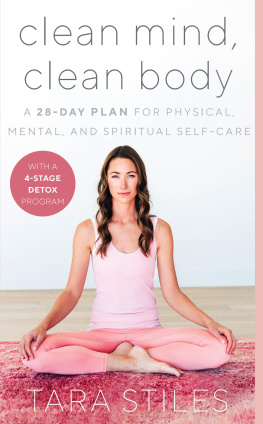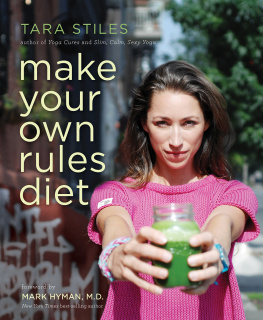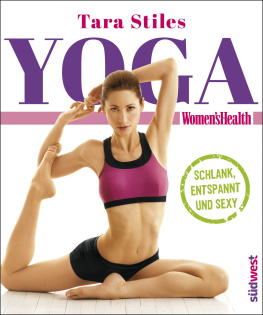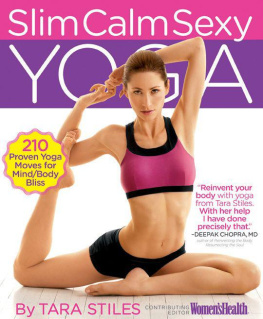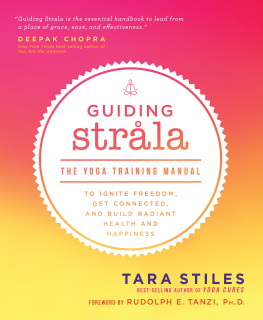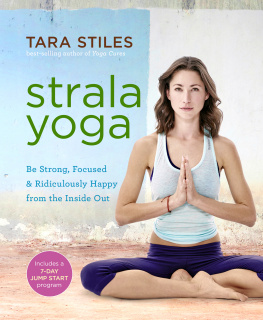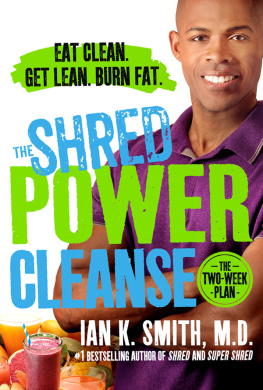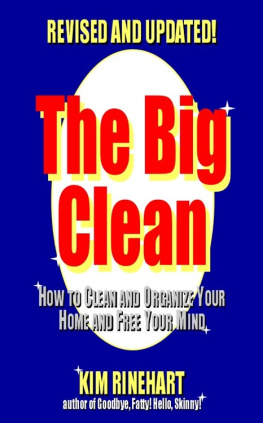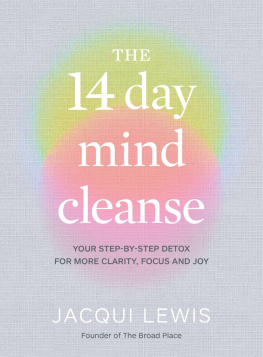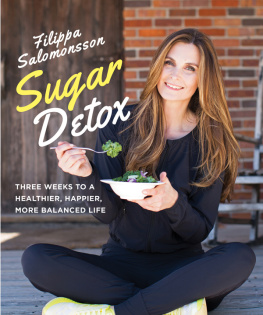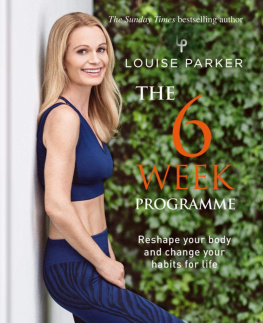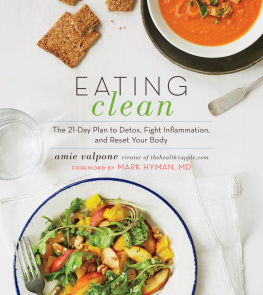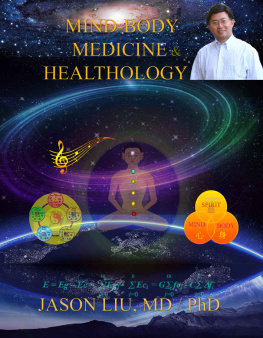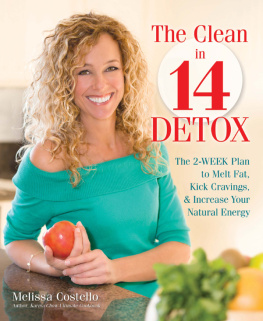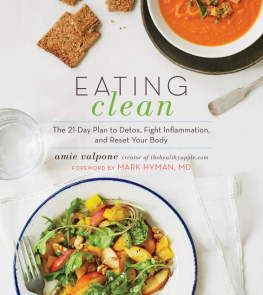Contents
Guide
For all the busy people looking for a better way to
get it all done and feel better in the process.
I hope this helps.
Contents
A healthy mind is the key factor for a healthy body... wellness must include a happy mind.
His Holiness the 14th Dalai Lama
I n many ways, you could say that we are living in the golden age of wellness. Back when I was growing up in the 1980s and 90s, you would hear a lot of talk about the importance of eating well and exercising, but there was a big piece of the conversation missing: few people were talking about mental well-being and the mind-body connection. That part of the wellness equation was mostly left out, and mental health just didnt get much attention unless there was a really serious issue.
Today all that has changed. It is now widely acknowledged in our culture that the mind and body are interconnected. We openly discuss our mental health, and many of us maintain practices like meditation and yoga that draw on ancient wisdom to promote the mind-body connection. We are living in a time of incredible awareness and opportunity when it comes to wellness. And yet, ironically, while we understand the mind-body connection intellectually, we are completely out of touch with its application, how to live in a way that facilitates mental and physical balance. We feel burdened by the pressure to appear well to the world, documenting our lives on social media, sharing an airbrushed version of reality with the world for validation. We subscribe to the cult of crazy busy, bragging about our stress and wearing our sleep deprivation as a badge of honor. We throw around buzzwords like self-care, but we dont understand the true meaning of wellness. Most of us only get serious about tending to our minds and our bodies when we are in crisiswhen we feel sick or sluggish, when we are stressed out beyond belief, when we are consumed by anxiety, depression, or mental fog. In search of relief, we commit to the next fad diet, try a new workout, or book a few sessions with a trainer, hoping it will make us feel better. And maybe we do feel better for a while, but it doesnt last.
AS I MAKE THE FINAL EDITS on this book, we find ourselves in the midst of the coronavirus pandemic, and many of us around the world are in lockdown, ordered to stay at home and practice social distancing and not partake in group activities, such as communal meals with friends and in-person exercise classes, to prevent the virus from spreading. During this time, I have been reflecting on how fortunate I am to have the privilege of staying home, feeling grateful that my friends and family are safe, and checking in with them regularly over the phone. Those of us staying at home have the easy job, while medical professionals and other essential workers are out there putting themselves at risk in order to keep us safe. We must recognize that we are being given a once-in-a-lifetime opportunity to take the cue to slow down seriously. If we let this time pass without heeding this call, we will have missed a massive moment for lasting transformation.
Its a good time to reflect on how you are, what your priorities are, and how you spend your time. Its a good time to reflect on what you would do if you could do anything at all. Now is a time of reinvention if you feel stuck. Now is a time of simplification if you feel too busy. Now is a time of peace if you feel anxious. Now is a time to look inside, realign, and point your energy where you truly want to be.
Deep down, what we really want is to be free from the toxic cycle of stress, anxiety, and insecurity. Its uncomfortable to admit how disconnected we have become from our true selves, from our mental, physical, and spiritual health, and from our relationships with others. We want a better way, but we dont know where to begin. And we are addicted to outsourcing our wellness. Instead of jumping on the bandwagon and trying the next quick fix that promises to help us feel better, we need to take a step back. Pause. And hit the reset button.
The ancient practices that many of us now subscribe to as part of wellness culture were able to develop on a much different timeline, back when people werent trying to squeeze so much into a day. Ayurveda, yoga, meditation, and the healing arts arose out of self-study and trial and error by practitioners who shared a common quest to know themselves and to share their knowledge with their communities. What started to take hold in these ancient societies was practical healthcare, a way of maintaining health and well-being as part of daily life, rather than waiting until we are sick to intervene and address health issues. For example, shiatsu, a form of Japanese bodywork based on concepts in traditional Chinese medicine (TCM), was originally practiced in the home between family members as a normalized practice of caring for each other. Can you imagine families doing this together today?
We need to remind ourselves that the power to heal exists in the actual practices, and that these practices live inside of us. The answers are not external. With yoga, change happens when your body comes into harmony with your mind through movement. With meditation, change happens when you quiet your thoughts and connect with a deeper sense of who you are. With Ayurveda, change happens when you get back in touch with nature and the seasons through the foods you prepare and eat. Sure, we can buy products that remind, aid, and inspire us to make positive changes, but none of these things are necessary. True healing is simple, and it starts within. It begins with a decision and a commitment to change.
Its important to keep in mind that these ancient practices are only valuable to us if we can tailor them to fit in with our modern lives and our needs. The challenge for most of us is going from knowing to doing. Its in deciding to take steps to make change in our lives because we desire to feel better, and its in making these practices work for us, day in and day out.
That is where this book comes in. Clean Mind, Clean Body is a 28-day journey that will show you how to use these ancient practices, and some modern ones, to reestablish the mind-body connection in your own life. It is a detox plan for both your mind and your body, intended to set you on the path to healthier, more sustainable habits for life. Im going to show you how to integrate well-being into every part of your life, and Im going to guide you through setting clean living goals that I hope will transform your health and your life.
This 28-day journey is divided into four parts, each a weeklong segment that focuses on a particular area of your life and shows you how to hit the reset button on your habits in that area. Week 1 is your Mental Cleanse, because the mind is where it all begins. During this first week well focus on recalibrating your habits for better work-life balance and a more sustainable pace of life, as well as reconnecting with yourself and with others. Week 2 is your Spiritual Detox, where well focus on reconnecting with your spiritual side, establishing a daily meditation practice, and living with greater intention. Week 3 is Change the Way You Eat, when well get into the kitchen and learn to nourish and love our bodies through the lens of Ayurveda and other tested wisdoms. Week 4 is Change the Way You Move, where well redefine exercise and shift the way that you think about and relate to your body. Throughout this journey, Im going to recommend practices and exercises for you to try, based on what has worked for me and for my students. You will want to be sure to also have a blank journal handy as you read this book, for completing the journaling exercises, and for jotting down any other thoughts or insights that come to you.

